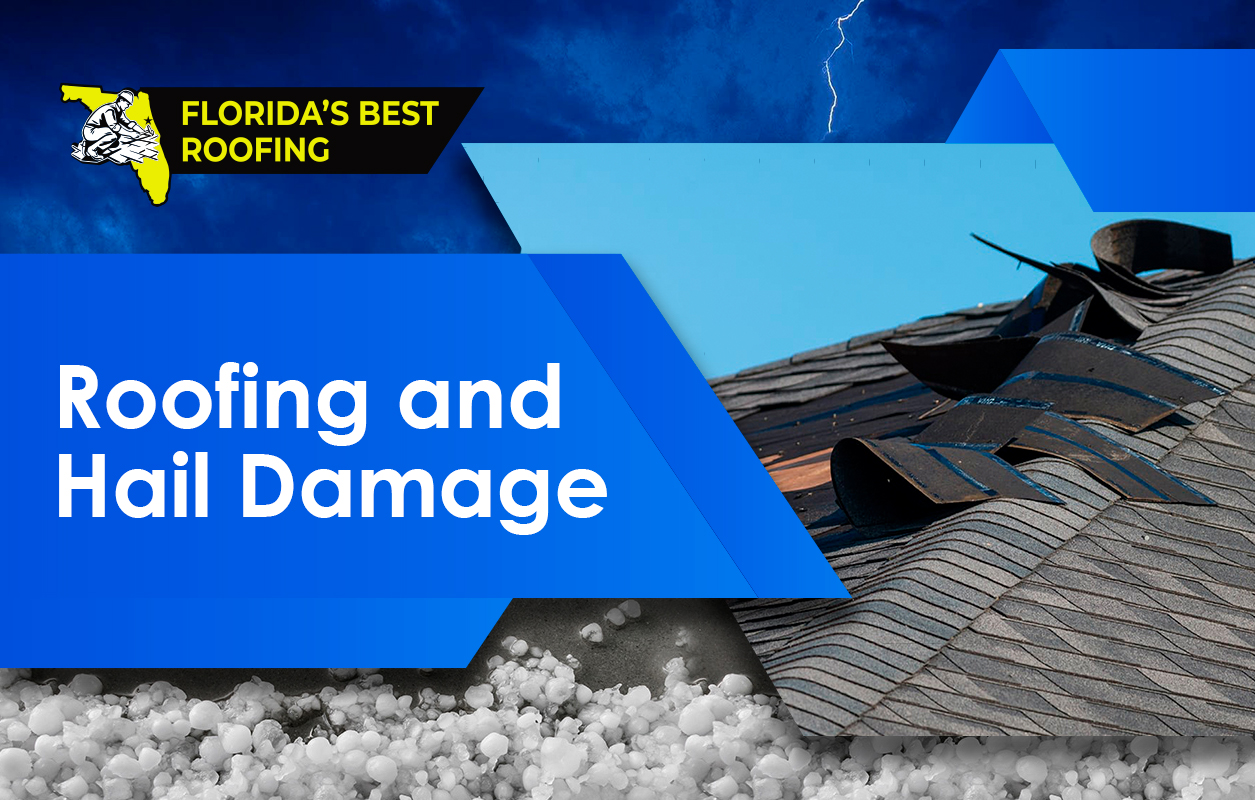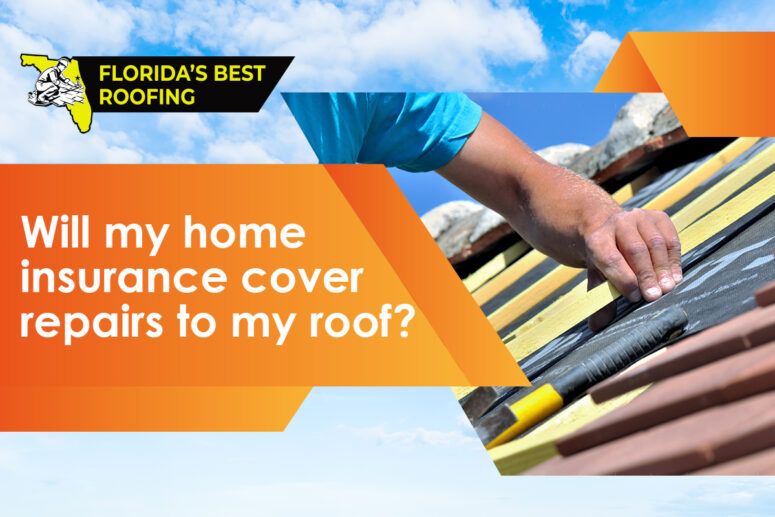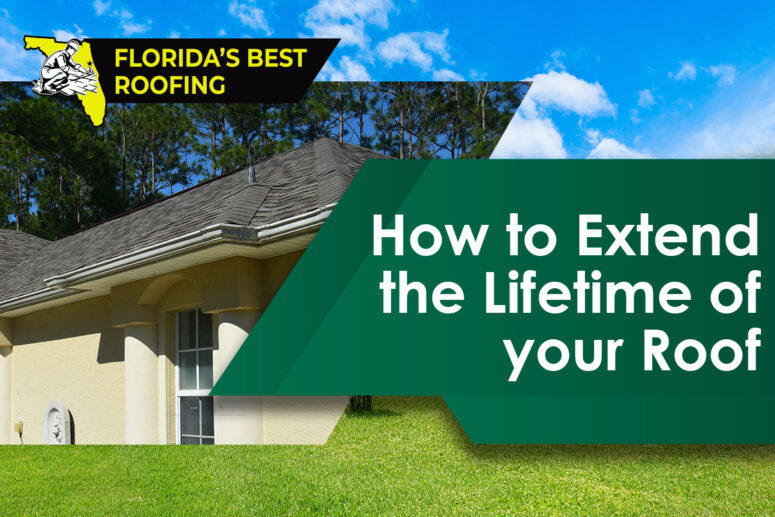Hail damage is a frequently overlooked problem which initiates roof deterioration and causes interior leakage problems for homeowners that continue to increase in scope and severity over time unless properly repaired. While hail storms may at first seem like a rare occurrence in a warm-weather climate such as Florida, that is in fact not the case. Typically, several such storms impact the Flagler, Volusia, and St. Johns county areas each year, causing multiple types of exterior damage to homes, particularly to roof coverings.
Unlike wind, which can tear off roofing materials, hail impacts them in less visible ways. This makes it more difficult to detect, mainly because it requires close inspection, which homeowners rarely do, and a knowledge of the signs of hail, which few have unless they are skilled in roofing construction or inspection. Here I will discuss the signs of hail damage, their impact to overall roof integrity, and the steps that should be taken to protect the home after a hail storm.
Hail impacts different roofing materials in different ways. Asphalt shingle roofs, the most common type of roof covering, are most susceptible to hail damage. Even small sized hail will impact asphalt shingles, causing bruising, pitting, and fracturing. Larger hail only causes more significant damage. The most insidious effect of hail on shingles is granule loss. Granules are the sand-like material, made of crushed stone and minerals, that covers all shingles. Once granules are lost, shingles lose their integrity and become susceptible to water damage, which eventually leads to leaky roofs. This process can take several months, but inevitably over time compromised shingles let in more and more water, which first damages the plywood sheathing of the roof, then leaks into the attic, and eventually appears as water stains on interior ceilings.
Tile roofs, both clay and concrete, are hardier against hail storms, but they are still often damaged by hail. Even small hail storms impact tile roofs. The damage in this case appears as crescent shaped fractures at the edges of individual tiles, as star-shaped fractures radiating from the point of impact, and occasionally entire shattered tiles. Tiles compromised in these ways can let in water during following rainstorms, damaging roof sheathing and eventually causing interior leaks. Subsequent weather events only exacerbate these issues as existing fractures grow larger and the tiles become less effective at protecting the structure. Metal roofs are strongest against hailstorms, and while large hail may dent the metal covering, the roof itself is not often compromised.
Another major problem with hail damage is that it is rarely, if ever, localized. Small repairs are not enough to restore a hail damaged roof to its previous intact condition. When a hailstorm hits, the slope(s) facing the storm are often compromised in their entirety. When this is the case, the roof must be replaced in part or across the whole structure to prevent further damage and future leaks. It is important to catch these conditions as soon as possible, because the longer a hail-damaged roof remains that way, the larger the chance of rotten and damaged sheathing and interior leaks, which cause additional expenses to the homeowner. Interior leaks are particularly problematic because left untreated they can invite mold growth, which becomes a health hazard and requires mold remediation services.
There are several ways to spot hail damage. The easiest, of course, is to hire a professional to conduct a roof inspection, however, there are some signs that can be spotted from the ground. Soft metals are often dented by hail. Thus, gutter downspouts, overhead garage doors, and metal fencing show the clearest evidence of past hail storms. Stucco and siding covering exterior walls may also present evidence of impact, particularly in thicker and softer areas such as the trim around windows, doors, and decorative aspects such as quoning on the corners of the structure. Finally, pitting and fracturing on roofing materials can sometimes be spotted from the ground. For instance, asphalt shingles with significant granule damage can seem to shine or sparkle in direct sunlight.
If you suspect that you have hail damage it is important that you consult a roofing professional to protect your home. At Florida’s Best Roofing we would be happy to come out and give you a free estimate. In the case of hail damage, it is also important that you contact your home insurance company. Home insurance policies cover hail damage to roofs, other exterior surfaces, gutters, fences, and any interior damage that may result from compromised exteriors. Make sure that all damage is documented by you, the contractor, or by an insurance adjuster before repairs are made, as doing otherwise may prevent you from getting a full payout. Also, always save all repair invoices after having work done on your property. We at Florida’s Best Roofing will work with you and your insurance company through the entire process to restore your home to its pre-storm condition and prevent further damage. Make sure to pay attention to weather patterns and how they affect your home. Catching damage earlier is always best and if you are in doubt, do not hesitate to call a professional.
#floridasbestroofing, #volusiacounty, #roofing, #bestrooging, #roofingcolor



